When the mist rolls over the surface of Camp Crystal Lake, silence becomes a warning. CRYSTAL LAKE (2026), Peacock’s bold new reimagining of the Friday the 13th mythos, is more than a revival — it’s a resurrection. Crafted with reverence for horror history and sharpened by modern storytelling, the series transforms Jason Voorhees from a slasher icon into something older, colder, and infinitely more terrifying. This isn’t just a return to the lake — it’s a return to the roots of fear itself.
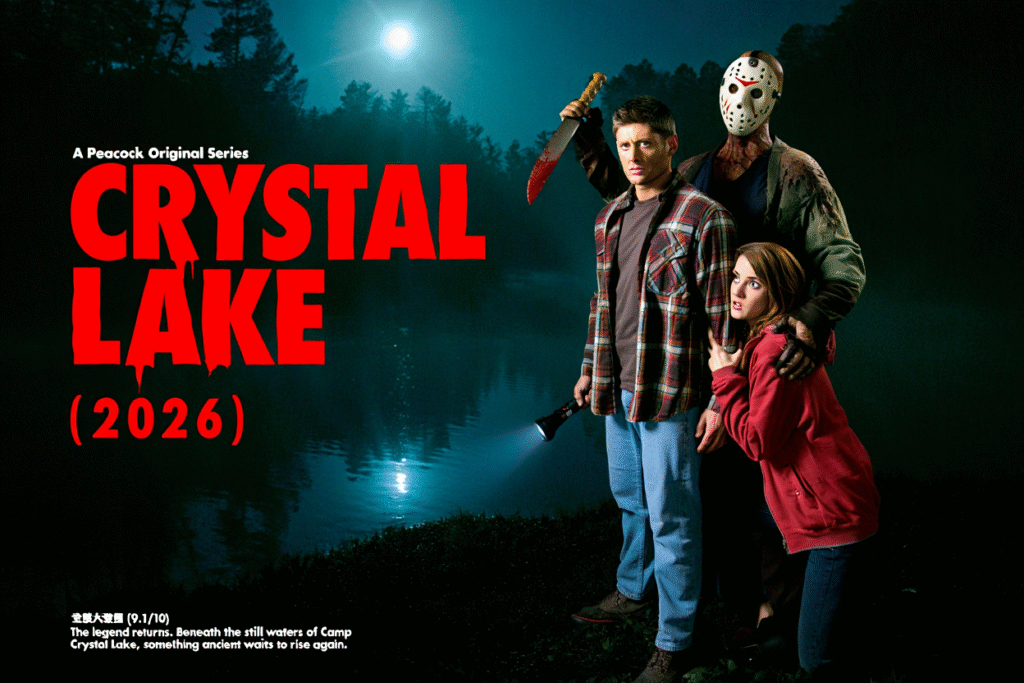
The first episode begins in eerie stillness. Years after the last known massacre, a team of paranormal investigators — led by Jensen Ackles’ stoic former detective and Emma Roberts’ skeptical journalist — arrives at the abandoned camp. Their goal is simple: uncover the truth behind decades of disappearance and death. But as the cameras start rolling and the fog thickens, the forest begins to whisper its own story — one written in blood.
From the moment Jason Voorhees (portrayed with bone-cracking physicality by Kane Hodder) emerges from the depths, the tone shifts from mystery to nightmare. Hodder’s return as Jason is a masterstroke of casting: his presence alone radiates mythic menace. Every movement feels deliberate, ritualistic, as though Jason is less a man than an inevitability. Gone are the cheap jumps and winking self-awareness of lesser reboots; CRYSTAL LAKE moves with the patience of something that knows it has nothing left to prove.
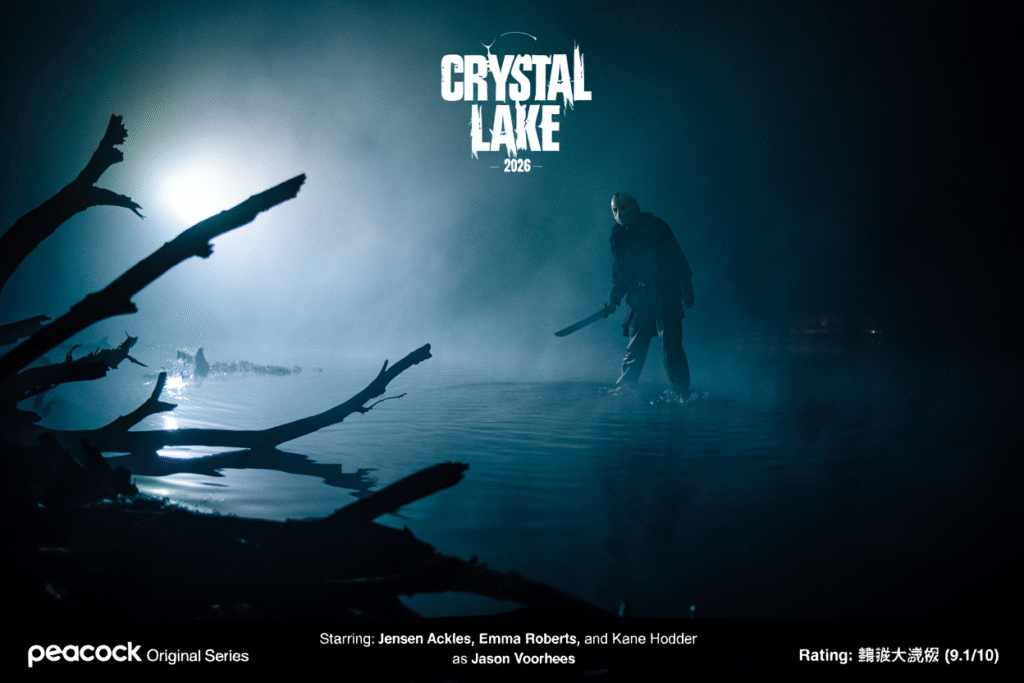
Jensen Ackles delivers one of his finest performances to date as Detective Ryan Hale, a man haunted not by monsters, but by his own disbelief. He’s a skeptic forced to face the supernatural — a role that fits him like a shadow. Emma Roberts, meanwhile, gives her best work since Scream Queens, shedding irony for raw emotion. Her character, Lydia Shaw, is equal parts investigator and survivor, her cynicism dissolving as the horrors of the lake become undeniable. Together, they anchor the chaos with quiet conviction, their chemistry both electric and desperate.
What sets CRYSTAL LAKE apart from previous incarnations is its atmosphere — a slow, hypnotic dread that feels almost Gothic. The woods are alive with echoes, the water glimmers like a mirror to another world, and the camp’s decaying cabins seem to breathe. Each episode unfolds like a ghost story whispered around a fire — except the fire’s gone out, and something’s still listening in the dark. The cinematography drenches every frame in silvery moonlight and decay, creating a visual language that feels equal parts elegy and warning.
The series dives deeper into the mythology than ever before. Rather than retreading the beats of the Friday the 13th films, it reinterprets them as folklore. Jason isn’t merely a killer; he’s a curse. Through flashbacks and fever-dream sequences, we glimpse his transformation from a drowning boy to a revenant of vengeance, shaped by grief, rage, and the lake’s sinister will. Del Toro-esque touches of the supernatural — roots twisting like veins, water that remembers faces — elevate the story from slasher to dark fairy tale.
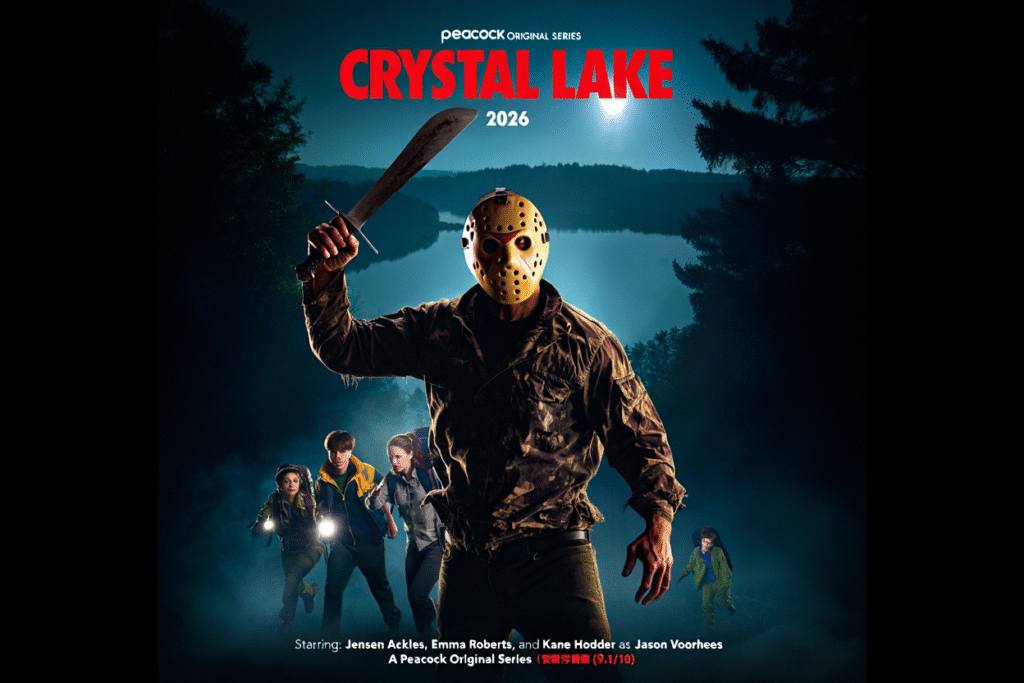
The violence, when it comes, is brutal yet artful. Director David Bruckner (The Night House, Hellraiser) uses gore not as spectacle, but as punctuation — quick, shocking, and purposeful. Each kill tells a story, reflecting Jason’s twisted sense of justice. One standout sequence, involving a broken dock, a flashlight, and a single drop of blood rippling across the lake, might be the most nerve-shredding scene in recent horror television.
But amid the carnage, there’s surprising poetry. CRYSTAL LAKE understands that horror is most powerful when it’s about the living, not the dead. The series explores guilt, obsession, and the hunger for truth — themes that echo through every scream. The investigators’ search for evidence becomes a metaphor for humanity’s inability to leave the past buried. And as Jason’s shadow stretches longer, it becomes clear: the true curse of Crystal Lake is not death, but remembrance.
Hodder’s Jason, reimagined with quiet menace, is no longer the lumbering brute of the ’80s. He’s a relic of wrath — the embodiment of every sin committed against innocence. His mask, cracked and moss-covered, feels like a tombstone. His eyes, glimpsed only once in the entire season, are not empty — they’re endless. In those seconds, the series achieves what few reboots dare: it makes Jason human again, and that makes him infinitely more terrifying.
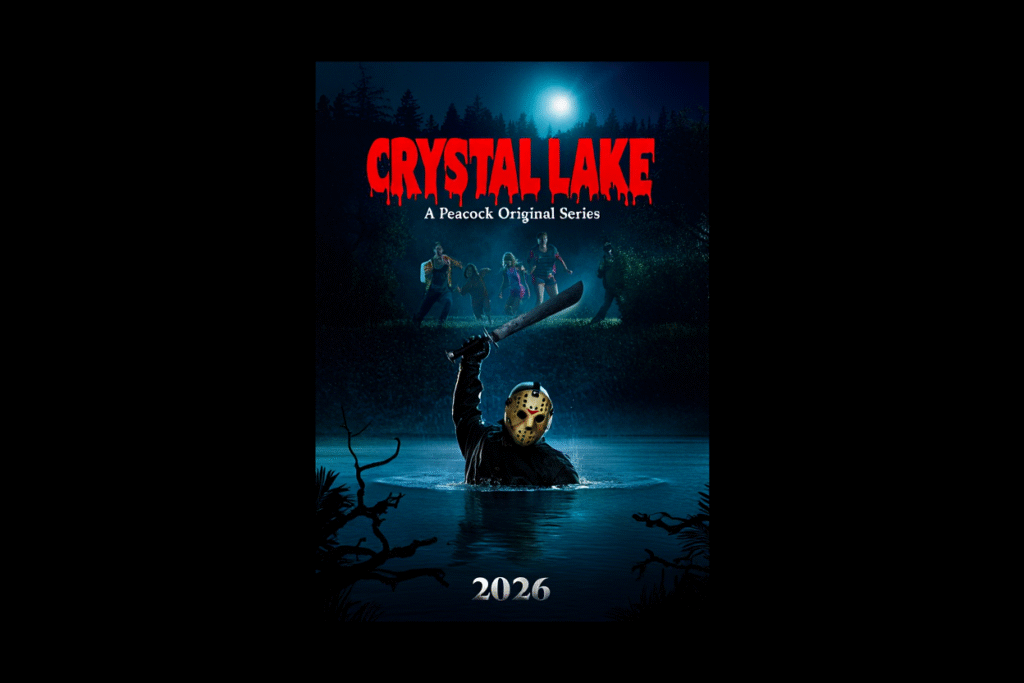
The final episodes spiral into pure nightmare. Reality fractures, timelines bleed together, and the investigators realize that the lake itself is feeding on them — a living memory that refuses to let go. When the season closes with Jason standing alone in the water, moonlight glinting off his machete, it’s not just an ending; it’s a promise. Evil doesn’t die. It waits.
CRYSTAL LAKE (2026) is a masterclass in reinvention — a brutal, atmospheric descent into the mythology of fear. It honors the legacy of Friday the 13th while forging something richer, sadder, and far more beautiful. It’s a show that understands why we keep coming back to the woods, even when we know what’s waiting. Because in the end, horror isn’t about monsters. It’s about the reflection in the water — and the things we see looking back.
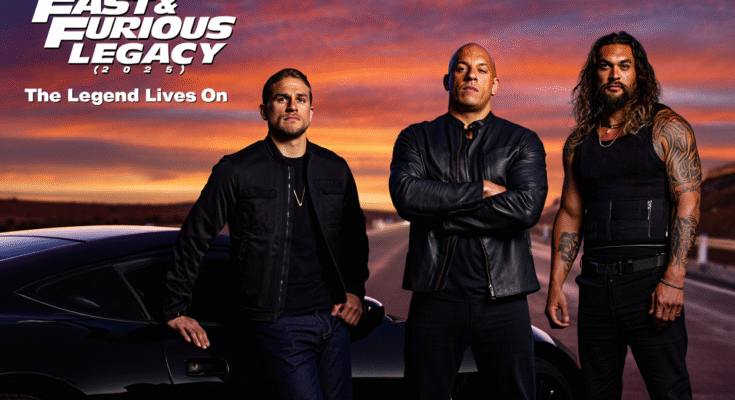

GIPHY App Key not set. Please check settings